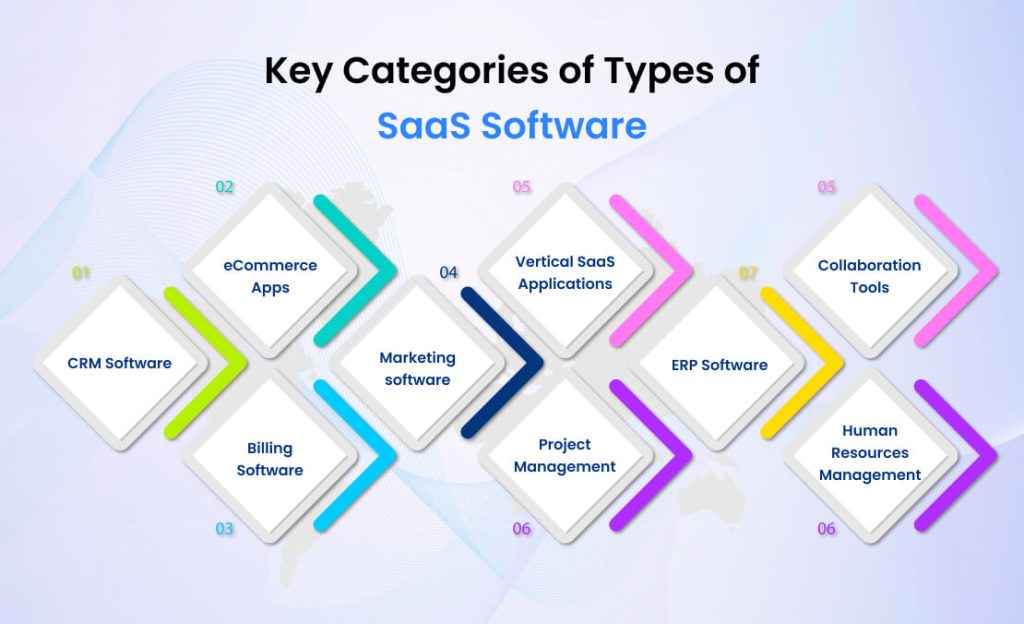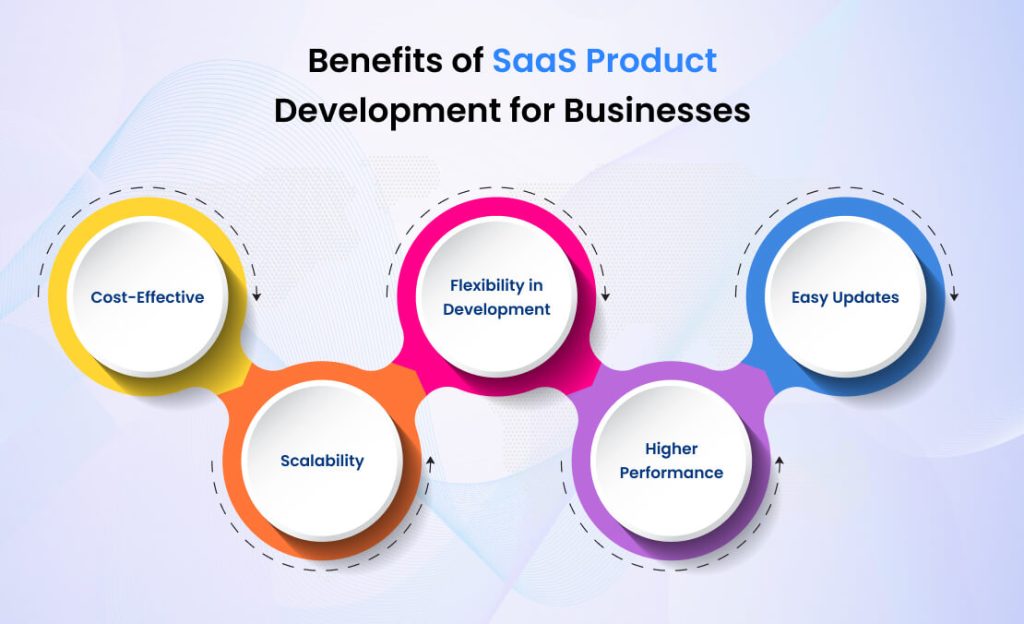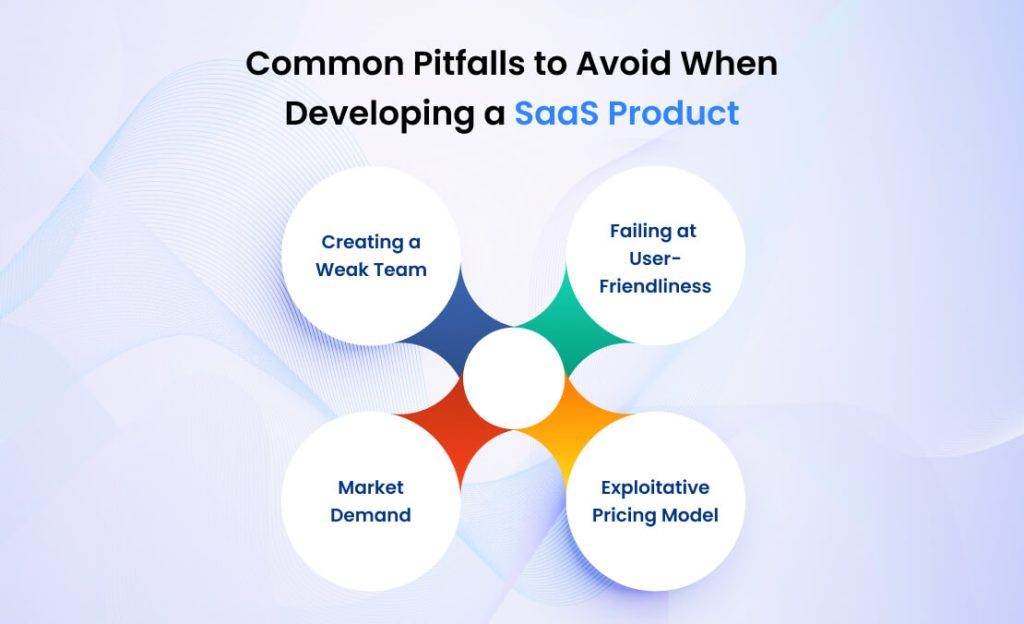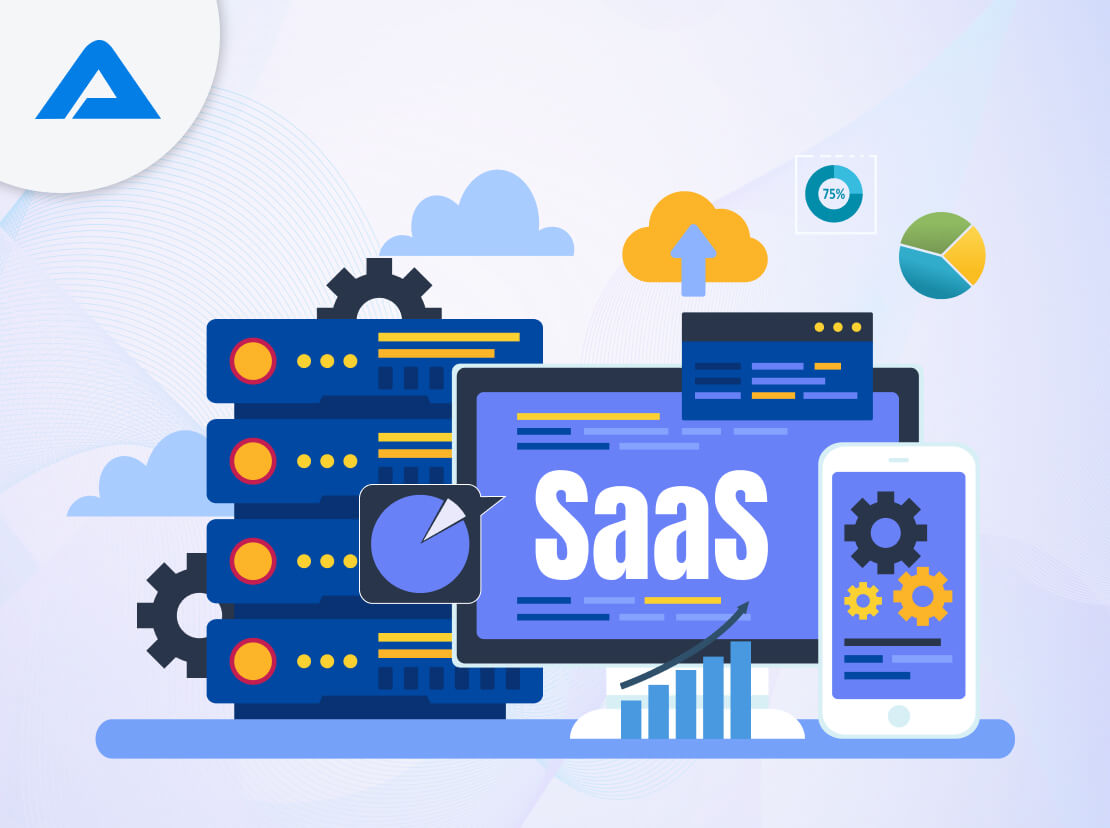SaaS or Software as a Service, also known as cloud-based software, has gained popularity as a software delivery model thanks to its convenience. Many people find it a blessing that businesses can easily access apps through the web without installing them or signing contracts. Companies can pay for overtime rather than all at once. SaaS software is now more affordable and flexible for all budgets.
Cloud technology has created a perfect environment for SaaS to flourish. SaaS is one of the fastest-growing segments in the IT industry. Today, businesses use 80 SaaS applications on average to run their business.
How do you build a SaaS? We are a custom SaaS development company eager to share our knowledge of custom SaaS. You will learn what SaaS is, how to build a SaaS app, and why this is so important for businesses
Overview of SaaS Solutions!
SaaS makes software accessible online via browser access without downloading, installing, or connecting to corporate networks; users only need access to the program via their Internet browser – making SaaS suitable for simple office software up to complex enterprise-level solutions.
Your clients can reap the advantages of subscription-based software without needing to upgrade or install anything themselves, typically through Internet browsers or API access from connected devices. Your software provider is generally responsible for regular software maintenance, while cloud computing providers usually maintain infrastructure as part of their service offerings.
Key Categories of Types of SaaS Software

Users are demanding more flexibility and quality in software as the technology market grows.
SaaS applications cover most business spheres that may benefit from the Software-as-a-Service technology.
Let’s now look at some of the most popular types of SaaS software:
CRM Software
SaaS applications for customer relationship management allow companies to maintain and update customer databases, manage marketing campaigns and leads, forecast sales, generate reports and dashboards, and automate their marketing initiatives.
eCommerce Apps
SaaS software is in high demand as more brick-and-mortar stores are moving online.
Billing Software
SaaS billing solutions are another profitable niche for SaaS app development. Cloud-based software helps businesses manage multiple online transactions and digital marketplaces to conduct mass payments.
Marketing software
SaaS has become a staple in the marketing industry. We can find dozens of SaaS applications that assist marketers in analyzing and improving their promotional tactics.
Vertical SaaS Applications
Vertical SaaS applications are niche-specific and help market participants in a specific industry or segment streamline their processes, improve efficiency, and streamline their workflow.
Project Management
SaaS has become the industry standard for project and workflow management. Asana Jira and Trello, a cloud-based project management app, are available from anywhere and perfect for remote workers.
ERP Software
SaaS is a popular way to access enterprise-grade software. Cloud-based ERP software includes complex data analytics tools to process large amounts of data.
Collaboration Tools
The remote work trend is here to remain, whether we like it. Businesses on a worldwide scale are increasingly using SaaS collaboration tools.
Human Resources Management
HR departments follow up on all the tasks relating to staff. SaaS applications can simplify various tasks, including gathering information on potential employees, managing jobs, tracking and evaluating performance, and compensation procedures.
Related Article:- Comprehensive Guide to Developing Cloud Based SaaS Apps
Benefits of SaaS Product Development for Businesses

As SaaS products are quickly growing in popularity, we outlined their critical benefits to explain this fast rise. With these references in hand, it should help you better comprehend how to develop one yourself – take a look!
Cost-Effective
In traditional licensing models, small or medium businesses must pay one upfront license fee, which may be prohibitively costly for many small and medium enterprises. But with SaaS subscription packages offering convenient monthly installment plans without placing financial strain on users – users are also free to spend as much on apps they desire without incurring penalties when no longer required and have more financial flexibility with spending amounts than traditional licensing models.
Scalability
SaaS can quickly scale as the business expands, accommodating expanding workloads and adapting additional users without incurring costly onsite infrastructure requirements. Traditional software makes this more challenging.
Flexibility in Development
SaaS applications give users greater development flexibility. Traditional software updates may take months for release by developers. SaaS makes changes easier as everything is managed from within the cloud – you don’t even need additional hardware if accessing through an internet connection!
Higher Performance
Traditional software development often suffers from slow response times and difficulties accessing remote servers for data. However, With SaaS apps, all processing happens centrally on one server – eliminating any possible delays between user interactions with the system and your access directly.
Easy Updates
SaaS developers constantly monitor the market and consistently gather user feedback to offer new features. You will always have access to the latest version of an application, which will be upgraded automatically.
Steps to Build a SaaS Product from Scratch
Some start-ups are adventurous and try to find their own SaaS platform without using code tools. Although it’s a possibility, these products are only temporary. They need more flexibility, and they are challenging to scale. We’ll see what happens when you choose custom SaaS development.
Viability of your Idea
Validating your idea for a cloud product is essential to ensuring that you create something that will meet real needs and have a market. You will avoid wasting time and money on a product that nobody wants.
Validating your idea is a simple process.
- Market Research: Find out what your competitors are doing and get an industry overview to determine demand for similar products. Analyze the findings you have gathered to discover the latest SaaS trends. Also, identify gaps in the market or other areas your SaaS can fill.
- Identify your Target Audience: Identify the target audience and describe their needs, pain points, and preferences. Conduct interviews and surveys to determine if your intended solution to a problem is genuine.
- Strengths and weaknesses of the products: currently available on the market. This will allow you to define your unique value proposition and strategize on creating SaaS products that can disrupt the market in your domain.
You can now start shaping the product concept. It will act as a guide for marketing, development, and implementation. The product concept should include these components:
- Problem Statement: It briefly describes the issue the product solves and the solution it offers.
- Value Proposition: a description of your SaaS products’ unique features and benefits.
- Target Market Description: Details your audience, including demographics and job titles.
Choose Your App Monetization Model
Before you begin the development of your app, you must decide how you will monetize it.
You should carefully plan your revenue model before building your app. Understanding your audience can help determine how much your users will spend on your app.
SaaS applications can be built using several different application models.
With the Freemium model, your app is free to download, but premium features can only be purchased for a fee. Cloud storage service providers offer a fixed amount of free storage. Additional storage is charged.
Digital marketplaces can use Transaction Fees and Selling Fees to monetize. You get a commission when users use your app to make money. A small fee is charged for any money transfers. This model is used by freelancing marketplaces such as Upwork to generate revenue.
In-app advertising has also become a popular monetization method for SaaS applications. App owners are paid per click and view of ads. Users can access free app services by viewing commercial videos or advertisements. Women’s health apps offer free advice and insights while promoting fertility clinics and private gynaecologist services.
If you are building a niche-specific app, the subscription model might be best. After a brief trial period, you will offer your users the option to pay a monthly or quarterly subscription. This model is best if your customers find the app has a unique business value.
You can combine different app monetization methods. In addition, you will also be able to benefit from the data your app collects and generates.
Design
SaaS best practices differ significantly from those used to design traditional solutions. You must develop an intuitive and straightforward UI and ensure that it can solve the user’s tasks as effectively as possible.
Pay attention to the mobile mock-ups you create – 87% of companies encourage employees to use business apps on mobile devices. Your future app must have a convenient interface, but it should also be protected and include role-based features.
Build Your MVP
“Minimum viable product” is the acronym for this term. MVP isn’t a fully functioning product but a mock-up with essential functions to test whether your clients will use your software.
Building an MVP to gather vital information on your customers is essential. This will allow you to analyze the key features of your SaaS. Remember to value the data you will have at the end to help streamline the development of your SaaS product.
- What were the most popular features? What should be changed or removed?
- Has your assumption about the target market been confirmed?
- Is there a market for your product or service?
- Clarify your forecasts in the business plan. Do you need to adjust the price tiers? How long will your project take to pay for itself with this rate?
You can now be more specific about what you want the app to look and feel like instead of going into it blindfolded.
Selecting a Technology
You should first define the technical stack before you go into detail about how to create a SaaS. You can find various languages, frameworks, and tools to help you develop a SaaS-based product. You must understand that your decision is based on your business goals and current needs.
#Front-end
Front-end development is centered around the user and what they see. Front-end developers are primarily concerned with the user’s experience. They are responsible for the design, bug-fixing, code analysis, and ensuring the users get the best possible experience.
JavaScript is the most popular language for SaaS, along with frameworks such as React.JS and Angular. TypeScript is another rising star in SaaS development. It’s an open-source language that has attracted many businesses.
#Back-end
The back-end is responsible for the server side of development instead of the front-end. Back-end developers are responsible for the “behind-the-scenes” — the database, the application, and the server. They ensure that the code they create facilitates communication between the database the information displayed on the screen, and performs updates.
You can use Ruby, Python, or Java for back-end SaaS, along with frameworks like Node.JS and Ruby on Rails. Many companies choose Java even though it’s been around for over 30 years.
#Database
Databases are a way to store and organize information. Computer systems can access them. Multiple tables are used to store large amounts of data.
You have many options here, but the most popular are MySQL and NoSQL
Your applications need databases to store the information they require. PostgreSQL or NoSQL are the recommended databases.
Create a Development Team
It is now time to create or find a team of developers to handle the entire SaaS process. You can either create a development team within your company or outsource all or part of the development. You will gain many benefits by outsourcing to a full-fledged development team. This will allow you to concentrate on other business processes, such as marketing.
Test, Develop, and Launch
This is the step that brings your SaaS to life. This is the time to get all your ideas together and create a product the market will receive well. You should not wait until your SaaS is fully developed before testing for bugs or code inconsistencies. Testing should be done in parallel with development.
We encourage SaaS owners considering SaaS to partner with a SaaS software development company with QA Engineers who should be on hand to perform routine testing during development. Synthetic testing can be used to simulate the end-user experience with your solution. You can quickly determine and fix potential problems with your product.
Even after your SaaS has been deployed, continue testing, maintaining, and improving it. Real user monitoring is one way to monitor the performance of your SaaS applications even after deployment. This type of performance tracking captures and analyses users’ real-time interactions with your SaaS app.
Common Challenges of SaaS Product Development
While developing SaaS services, particular specific challenges must be kept in mind.
Choosing the Right Technology
Scalability is an enormous benefit of SaaS apps, but selecting the appropriate technology to make it so is imperative. Partnering with an established SaaS vendor that can guide your selection process toward creating the right tech stack is vital to their success.
Customer Needs
SaaS developers face numerous challenges in creating products to fulfill customer requirements and expectations. In addition, these needs and expectations shift over time.
Therefore, when developing software products or solutions that serve customers better, you must prioritize customers over yourself. Gather their needs and expectations before designing solutions that meet entirely those expectations. Before programming begins, devote special care to conceptualizing what your future product might look like to ensure it fully accommodates user demands and demands.
Hiring Development Team
A service-oriented approach when developing SaaS applications is vital, as this will ensure all members of your development team understand its details and goals.
Common Pitfalls to Avoid When Developing a SaaS Product

SaaS product creation is a challenging task. When developing software, many companies make serious mistakes. What are they? What are they?
Creating a Weak Team
What is a SaaS? A SaaS product is software that requires constant updates. In such circumstances, creating a team capable of delivering a solid foundation is essential. In the long run, many firms have major updates problems because they need to hire professionals with relevant experience. The team should also be consistent, as burnout and turnover can disrupt development.
Failing at User-Friendliness
What is a SaaS from the user’s perspective? Apps are a part of our lives. If your users are uncomfortable, you can be sure they will dislike your business for a long time. Many companies themselves spread negative rumors about their attitude towards user experience. A loss of reputation can lead to failure in the long term.
Market Demand
Some products are just there for show. They have a plan and are desperate to make it real. What’s wrong? Only the project leader and the developers need this product. After its release, customers tend to ignore it. Interviews and surveys can help you avoid this problem.
Exploitative Pricing Model
SaaS product design involves many solutions that control the central processes in business. Some companies have aggressive pricing models because they know their customers may not have other options. This is a wrong approach because it will lead to a demand for more equitably priced models. In such circumstances, disruptive competitors are inevitable. Customer loyalty is crucial to success.
Cost of Building a SaaS product from Scratch
It is important to note that this statement is a generalization. A SaaS project’s actual cost and time frame will vary due to various factors. It includes the complexity of the software, the level of expertise required to implement your technical requirements into code, and the maturity of the business idea.
Speaking of team composition, the cost for SaaS development services will largely depend on hourly rates, which vary based on location and developer experience. Hourly rates may range from $50 to $150 per hour. The rates also vary depending on the developer’s experience and level. Full-stack developers like Node.js will cost more than Java developers, who mainly cater to back-end development.
- Basic: $50,000 – $100,000
- Medium: $100,000 – $300,000
- Complex: $300,000 – $500,000+
Other service lines also impact the cost of SaaS.
- Infrastructure Setup cloud or On-premises, preferred vendor and system complexity; required computing capacity; services employed.
- Front-End and Back-End Development: Tech stack, engineers’ experience, and seniority, the number of engineers working full-time or part-time.
- Integration of Third-Party Services: Service cost and integration efforts
- Security Services – Tools to be used and any industry-specific privacy protection requirements or compliance requirements
- Quality Assurance and Testing: Manual or Automated, Expertise and Seniority of Specialists, Number of Specialists involved
- System Maintenance and Support: Tools to be used, host, computing capacity required, number of specialists, locations covered, 24/7 or only business hours, etc.
Businesses must carefully budget and plan for SaaS. Working with the development team to get accurate cost estimates for their projects is essential.
The Key Takeaway
The IT Industry is still a young segment, but Software as a Service has incredibly high potential. Maximizing the potential of this sector by creating a SaaS-based product takes work.
The benefits of the SaaS model are gaining popularity, even though it is unsuitable for all business cases. Many large enterprises, such as Adobe Photoshop and Microsoft Word, use this distribution model. You should also know that many popular apps like Grammarly, Slack, and Spotify were developed as SaaS applications from the start.
Are you looking for a development team with the expertise to create a SaaS app? AddWeb Solution can help you realize your vision and address all SaaS needs.
